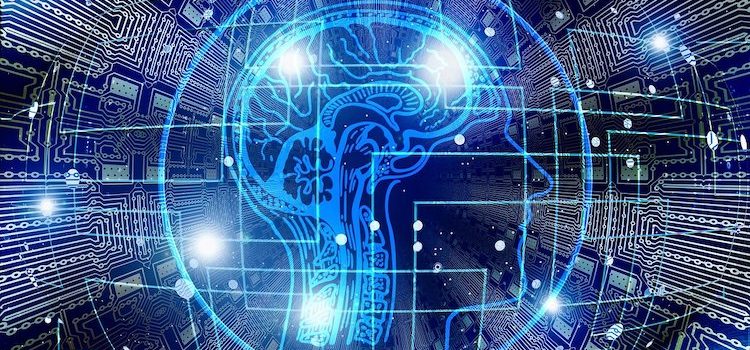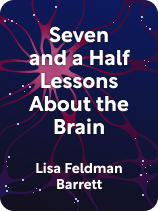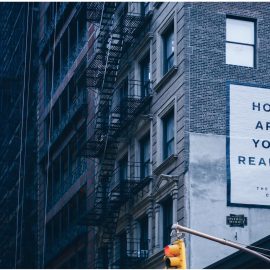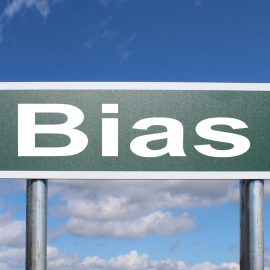

This article is an excerpt from the Shortform book guide to "Seven and a Half Lessons About the Brain" by Lisa Feldman Barrett. Shortform has the world's best summaries and analyses of books you should be reading.
Like this article? Sign up for a free trial here.
What is a neural network in the brain? What does the neural network do?
Rather than a simple and static three-layer structure, Lisa Feldman Barrett says the brain is a complex and active web of neurons. Put simply, neurons are the messengers of the brain in a neural network.
Read below for a breakdown of the neural network in the brain, as explained in Seven and a Half Lessons About the Brain.
The Brain Is a Network
What is a neural network in the brain? Neural networks compromise of neurons that handle information. They take in information and transmit electrical impulses to each other to communicate what is happening and how the body should react. For example, if you touch a hot stove, the neurons in your brain would receive that data and instantly tell your body to pull your hand back. Barrett goes on to explain that neurons form clusters and share information with each other. We can imagine these clusters as a group of people talking. Some of the neurons in those clusters communicate with other clusters in the vicinity (like neighbors chatting in the front yard). Some clusters are bigger and more powerful than others (such as people who have a public forum or social influence).
And some clusters communicate with other clusters across the brain, not just the ones nearby (as in email, a phone call, or on social media). In this way, the entire brain shares information and participates in shaping your experiences and behaviors.
(Shortform note: It might seem from this description that neurons are the only stars of the brain show, but there are other important cells in the brain that allow neurons to do their work: glial cells. Their name comes from the Greek word for glue, which makes sense because they help neurons build connections with each other to share information. In addition, they identify and destroy injured neurons so new ones can crop up.)
Characteristics of the Brain
As we’ve seen, brains are made up of neurons that get together to form clusters and share information. Barrett says that, as the foundational element of brains, neurons give brains two important characteristics: plasticity and complexity.
1. Plasticity
Plasticity refers to the brain’s capacity for constant change. Neurons continuously learn new information, age, die, and get replaced. This doesn’t mean that the information those neurons contained disappears, though. Other neurons preserve that information in case you need it in the future.
Similarly, neural connections that aren’t getting used become less agile while those that are exercised often become stronger, just like your muscles. That’s why you have a hard time remembering and using any information you only heard once. But if you go back to the information several times, that connection will become stronger and easier to retrieve and apply.
Neurons can also learn to perform new tasks if necessary. They don’t naturally have one specific job. Instead, they can all perform a range of different tasks but end up performing the specific functions we need them to do. For example, Barrett explains that if a person loses one of their senses, such as their eyesight, the neurons that process visual input can quickly learn to process other sensory input. This is why a blind person’s sense of touch is heightened, which helps them read braille.
You can think of your brain as an orchestra and neurons as the individual musicians. Plasticity gives musicians (neurons) the ability to learn new music and play more than one instrument (just as neurons are capable of having more than one job). But if they stop practicing, they become rusty.
2. Complexity
Complexity refers to the capacity of neurons and clusters to organize into different information-sharing patterns and respond to new needs by changing those patterns as needed. For example, there are specific neurons and clusters in your brain that allow you to navigate your city or town every day. If you use public transportation, there are several clusters that help you find your way to the right stop, pick the right bus, and get off at the right station. If you move to a different neighborhood, those clusters will reorganize themselves to help you learn the streets and stops in your new surroundings.
Barrett argues that complexity is a crucial characteristic that we rely on for day-to-day survival:
- It helps us be creative and adapt quickly to survive in new environments because it creates new patterns to deal with new situations.
- It helps us recover after brain injury because other neurons and clusters can be formed to take over a part of the brain that’s been hurt.
Referring back to your brain’s “orchestra,” complexity allows it to adapt to changes quickly and easily. For example, if the orchestra’s conductor changes, or one of the musicians is ill, they can adapt to the new conductor’s style or find a substitute for the musician and carry on with the show.
(Shortform note: Complexity is a powerful skill that Artificial Intelligence still lacks, and as such it’s a differentiator in how machines and human brains process information. For example, scientists explain that when you look at an object from a different angle, you’re still able to recognize that it’s the same object. Not so for machines, which might see the back of an object and no longer recognize it as being the same. This is because our brains’ patterns can reorganize themselves quickly to understand new information, which AI cannot do—yet.)
Plasticity Helps Overcome Trauma
Sufferers of post-traumatic stress often use some neural connections more than others because traumatic memories stored in the brain can be triggered very easily. Even if the context they’re in is very different from the one where the trauma took place, the brain already recognizes a similarity and goes into fight-or-flight mode as soon as the traumatic memory resurfaces. This makes it hard to separate the current context from the traumatic context, and therefore triggers reactions that are inappropriate for the current situation.
Each time a trigger makes a traumatic memory resurface, it strengthens that neural connection. However, by intentionally making small behavioral changes and finding new ways to think about triggers of traumatic memories, PTSD sufferers can rewire their brain to make those traumatic neural connections less active. Over time, those neural connections will weaken and make room for more constructive ones.
Some behavioral changes people can make to weaken traumatic neural pathways are:
- Practicing new ways of thinking about the memory and intentionally bringing those new associations to mind.
- Making room for traumatic feelings instead of avoiding them.
- Proactively deciding how to act when triggers happen instead of acting by default.

———End of Preview———
Like what you just read? Read the rest of the world's best book summary and analysis of Lisa Feldman Barrett's "Seven and a Half Lessons About the Brain" at Shortform.
Here's what you'll find in our full Seven and a Half Lessons About the Brain summary:
- How the human brain develops and operates
- Why the brain isn't organized in the way you thought it was
- How brains collaborate with one another






